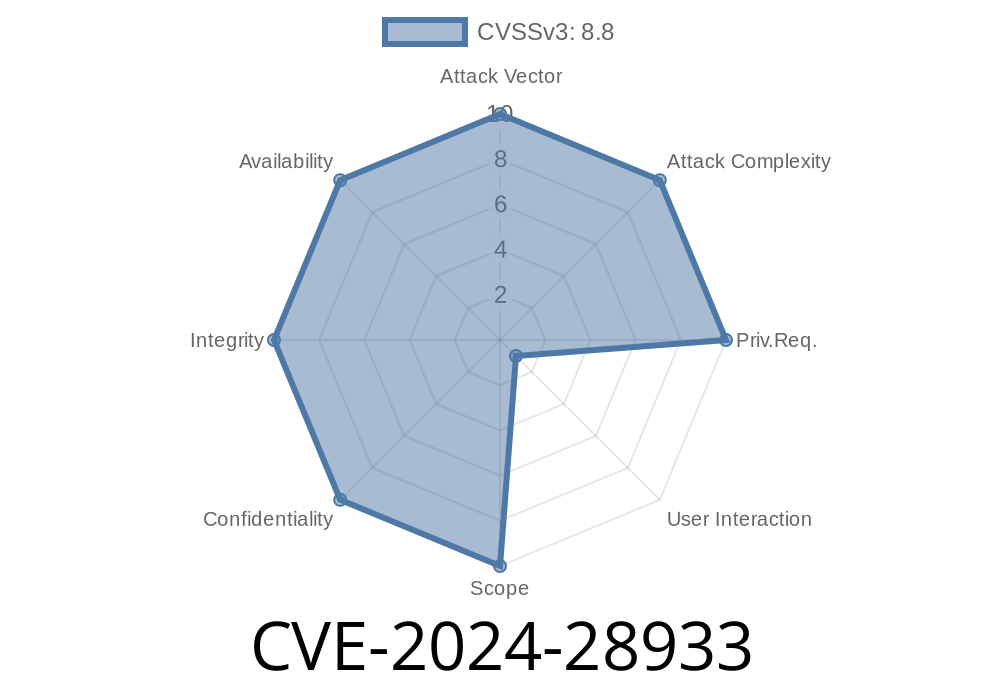In March 2024, Microsoft published security updates for a critical issue affecting the Microsoft ODBC Driver for SQL Server. Tracked as CVE-2024-28933, this vulnerability is a Remote Code Execution (RCE) flaw that may allow attackers to run malicious code on your systems—simply by abusing how the ODBC driver handles network data. If your infrastructure connects to SQL Server via the Microsoft ODBC Driver (Windows, Linux, or macOS), you must pay attention. In this post, I’ll break down the bug, how exploits work, and what you should do.
What is the Microsoft ODBC Driver for SQL Server?
ODBC (Open Database Connectivity) is a standard API for connecting to databases. Microsoft’s ODBC Driver lets Windows, Linux, and macOS applications communicate with SQL Server. Enterprises, developers, and productions systems use it everywhere.
About CVE-2024-28933: The Big Problem
The core issue in CVE-2024-28933 is improper input validation. When connecting to a SQL Server (even remotely), the ODBC driver does not properly check or sanitize the data it gets back from the server. A malicious or compromised SQL Server—or an attacker in a man-in-the-middle (MitM) setup—can send crafted responses triggering code execution on the client.
- Official Advisory: Microsoft Security Update Guide: CVE-2024-28933
- NIST NVD Details: nvd.nist.gov/vuln/detail/CVE-2024-28933
Malicious server sends bad data triggering a memory corruption in the driver.
4. Remote code is executed on the client, under user privileges—potentially leading to lateral movement or data theft.
Exploit Walkthrough (Concept & Proof-of-Concept)
Note: A fully weaponized exploit is not public (as of writing), but here’s how an attacker could abuse the bug, based on available info.
Wait for victim’s ODBC client to connect (sqlcmd, pyodbc, business app, etc.).
3. Send a deliberately crafted response when the client attempts authentication (eg. through malformed protocol packets, dangerous length fields).
Example Code Snippet (Python POC outline)
Suppose you have a Python script that simply connects to SQL Server (using pyodbc which uses MS ODBC Driver under the hood):
import pyodbc
conn_str = "DRIVER={ODBC Driver 17 for SQL Server};SERVER=malicious-server;UID=test;PWD=pass"
try:
conn = pyodbc.connect(conn_str, timeout=5)
print("Connected!")
except Exception as e:
print("Failed to connect:", e)
If malicious-server sends a crafted response targeting CVE-2024-28933, the code execution can be triggered on your system as soon as the connection attempt is made.
> Real-World Impact:
> Any script, app, or service using the ODBC driver—think Power BI reports, .NET web apps, data ETL jobs—could be a target!
Microsoft scored it as CVSS 8.8 (High).
Official fix:
Install the latest version of the ODBC driver:
- Download ODBC Driver 17 for SQL Server
- Download ODBC Driver 18 for SQL Server
Never connect to unknown SQL Server addresses. Use allow-lists and network segmentation.
3. Turn on Encryption/Mutual Auth
More References
- Microsoft Security Update Guide: CVE-2024-28933
- Full Patch Notes & Download Links
- NVD Detail Page
- RedHat Security Blog (often includes RPM and Linux-specific coverage)
Bottom Line
CVE-2024-28933 reminds us: database drivers matter. They’re code, and code has bugs. If you use Microsoft’s ODBC Driver for SQL Server—on any platform—update _right now_ or risk code execution from a rogue server. Apps, scripts, and services are only as secure as their dependencies.
➡️ Patch. Verify server addresses. Block unknown traffic. Encrypt everything.
Timeline
Published on: 04/09/2024 17:15:54 UTC
Last modified on: 04/10/2024 13:24:00 UTC
